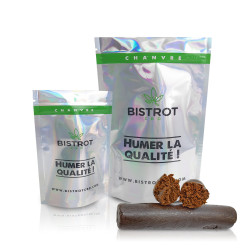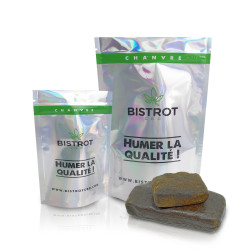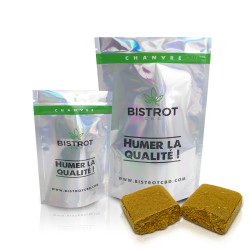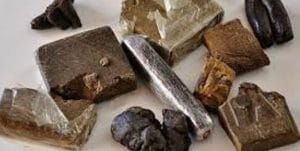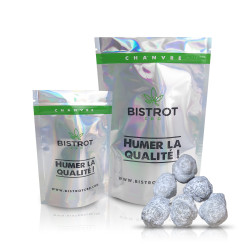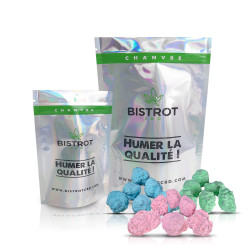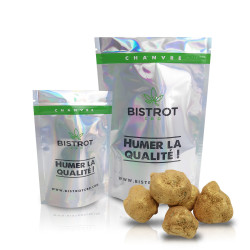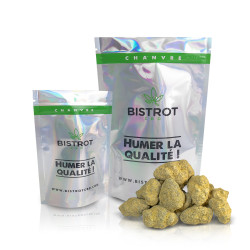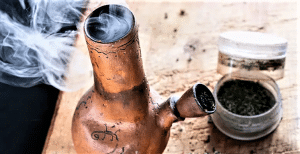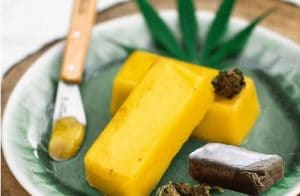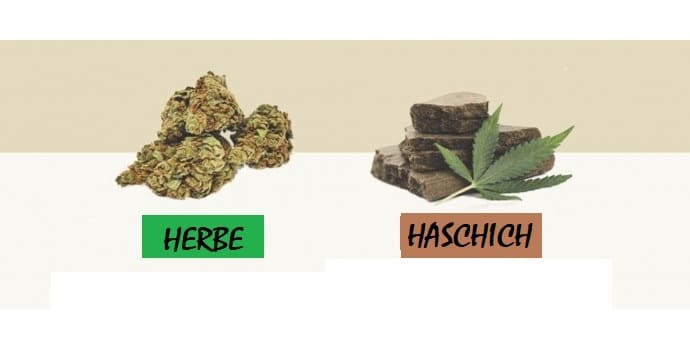
CBD (cannabidiol) is, like THC (tetrahydrocannabinol), an active substance (cannabinoids) in hemp. En France and around the world, thehe cannabis (resin, flowers, ..) is still classified as a drug. It differs systematically from legal hemp (textile, thermal insulation, brick…). And yet, it is indeed the same plant!
General information on CBD and THC in cannabis in France
It is these cannabinoids and their concentration that distinguish a legal subspecies from an illegal one. It is commonly called :
- Indian hemp or cannabis indica the subspecies with a high THC content (
psychotropic substance and forbidden by the French law
).
- Hemp or cannabis sativa, is the subspecies that is used in the food, textile and construction industries. The latter is also what we are talking about when we talk about CBD cannabis.
In France, the use and sale of CBD plays on a legal blur. The law prohibits all products containing THC (i.e. cannabis). On the other hand, the CBD molecule does not appear
in the list of narcotics
. This substance from cannabis, with relaxing effects, is then found :
- in many products,
- in different forms,
- in various grades
- with a range of flavors commensurate with the existing varieties of cannabis,
- for purposes sometimes referred to as “therapeutic
- responds to a preferential choice of absorption according to an individual.
Among these products, CBD oil, flowers and resin (hashish) are the most popular. They are as much for their simplicity of consumption as for their taste and their quick effects. But, we also find liquid for electronic cigarette, balms or capsules containing CBD.
In the following paragraphs, we will focus on cannabis resin. It is the most known form of marijuana (with the
flowers
). It has been consumed in France for two centuries.
History of hashish
Cannabis is native to Asia. It has been used since the dawn of time in different forms and in many countries of the world. Cannabis oil resin (also found under the names: hashish, hash or shit) is on the other hand more sectarian. It is mainly manufactured in two countries: Morocco and Afghanistan.
The effects of cannabis resin (cbd or classic)
In the middle of the 19th century, this resin was already in the news in France. In Paris, she is at the center of an international movement that sells the therapeutic use of this product:
- Around 1830, lozenges were infused with hash for pharmaceutical purposes. The goal? Attempt to fight the evils of the time (cholera, plague…). To better regulate the concentration of THC in these pot-based preparations, some pharmacists are developing cannabis tinctures. They also advocate smoking it in the form of medicinal cigarettes.
- In 1840, hemp resin was still at the heart of the debates in Paris. After a trip to the Orient, the alienist doctor Jacques-Joseph Moreau of Tours even opened an establishment where the consumption of hashish was tested in the form of green jam:
The Hashish Club
.Among his supporters, we find friends of this doctor. But also artists and writers such as Charles Baudelaire, Honoré de Balzac and Théophile Gautier (to name but a few). The latter will stage his cannabinic experience by overplaying and ironizing its psychotropic effects.
On July 12, 1916, the French Senate passed the first real law prohibiting cannabis. It prohibits the consumption, importation and marketing of poisonous substances such as cannabis.
What is cannabis resin?
Hashish is composed of trichomes (very often misnamed “pollen”). They are extracted from the hemp flowers and pressed manually or hydraulically. The resin forms a more or less compact and sticky paste. Its color varies according to the varieties of marijuana and the method of extraction used for its manufacture. This extraction can be done :
- using solvents. They separate the oil resin from the rest of the plant material.
- manually by rubbing the flowers and leaves of the weed plant directly with your hands.
The colors of CBD resin or classic
The 3 most redundant colors of the shit are specific to the countries that make them. They characterize one type of shit rather than another:
- Brown / olive green: it comes from Morocco. This shit called “Moroccan” has a strong and pungent taste. It results from 3 hydraulic presses. The first one, “the olive”, is the purest and the most prized. The second one is the most commercialized in the country of origin and in France, at the “wholesalers of drug trafficking”. Finally, the third is of lesser quality. It is often cut with other products to increase its mass and therefore its profitability (the price is fixed by gram). We find it in the streets of France.
- Black with green highlights: it comes from Asia. This shit is called “Nepalese” or “Afghan”. It has a sweeter taste and a long finish. Its smell is very bewitching. It is obtained by hand pressing which gives it an extremely malleable aspect (chewing gum type).
- Red: The “Lebanese” is the least common hashish. The harvest of this variety is done when the flowers are already dry. It is from this particularity that comes its ochre color.
CBD resin in France
The manufacture of the hash CBD differs from that of the traditional pot only by the varieties of cannabis used for the transformation of the product. The plants authorized on the French territory must have a rate of THC lower than 0.2%.
We find the same characteristics in CBD resins as well as in common hashish:
- flavors,
- methods of extraction of trichomes from the rest of the plant material,
- consistencies
- colors
Only the effects, relative to the molecules which compose these pastes of cannabis, differ.
The effect of CBD resin
As for the other products containing CBD (
oil
flowers, balms, capsules …), the CBD resins of the French market have a relaxing effect. Sometimes there is a slight risk of drowsiness, but it is not systematic. However, it is advised not to consume it before driving.
CBD resin is powerful
The concentration of CBD varies from one type of product to another and sometimes even for the same range. For example, CBD oil is sold with different levels of the molecule. If the oil holds the record of concentration in CBD, the resin arrives in second position, then
the flowers
For this reason, the consumption of CBD hashish must be done sparingly. Then, favor small quantities to start your experiment.
How to consume CBD resin?
There are different options for consuming CBD hashish. Each method has its own specificity. Thus, it can be chosen according to the expected effects, the price and the taste of each one:
Smoking CBD resin
The most common use of CBD pot is to smoke it. However, this method of absorption is harmful and of little value. In particular, because of the tobacco combustion that accompanies the resin and its harmful effects on health. Moreover, it degrades the molecules of CBD.
Vaporize CBD resin
The
vaporization
is increasingly replacing this first method. It fills the smokers thanks to its vapor and, optimizes the absorption of the CBD. Indeed, the benefits of this cannabinoid are felt more quickly and are more powerful if they are integrated into the body by respiratory way.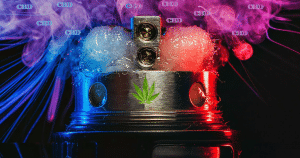
Vaporizers specially designed to hold resin are available. They are equipped with a small grid to hold the “hash ball”.
Inhaling CBD resin
Inhalation also allows for absorption by the respiratory route. However, it is gentler than the first two options.
Problem : You need to be able to stay above a boiling pot for several minutes to completely extract the CBD from the resin to feel effects as strong as those brought by vaporization. This is obviously impossible under penalty of burning!
Ingestion of CBD resin
There are different techniques to effectively ingest resin:
herbal teas
to which it is necessary to add fat (whole milk, cream, ..) to accelerate the absorption of CBD by the body.- Resin-based cooking recipes (
space cake
or dishes in sauce) are gentle and long-lasting methods of ingestion. CBD is assimilated in the body after digestion (which degrades some molecules in passing). The effects of CBD cannabis resin are therefore felt after some time. As a result, they are slightly lessened.
There is no “best universal cannabis species” for making CBD resin. However, it is preferable for a consumer to move towards 100% natural CBD resins. On the other hand, the taste, the strength of the product, the choice of one method of consumption rather than another, and the variety of CBD resin is up to the individual.
“Tastes and colors are not up for discussion!”
FAQ : CBD resin
[sp_easyaccordion id=”10928″]
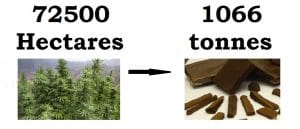
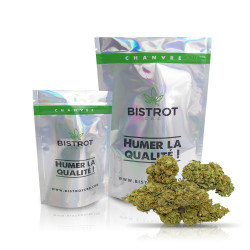
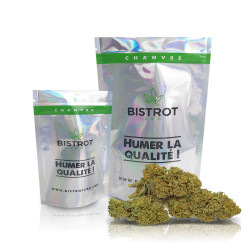
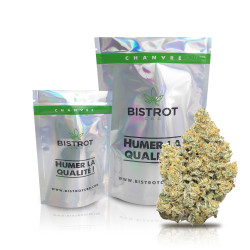
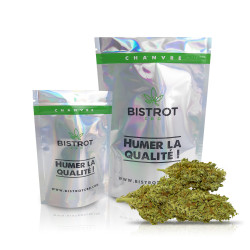
 Among his supporters, we find friends of this doctor. But also artists and writers such as Charles Baudelaire, Honoré de Balzac and Théophile Gautier (to name but a few). The latter will stage his cannabinic experience by overplaying and ironizing its psychotropic effects.
Among his supporters, we find friends of this doctor. But also artists and writers such as Charles Baudelaire, Honoré de Balzac and Théophile Gautier (to name but a few). The latter will stage his cannabinic experience by overplaying and ironizing its psychotropic effects. 